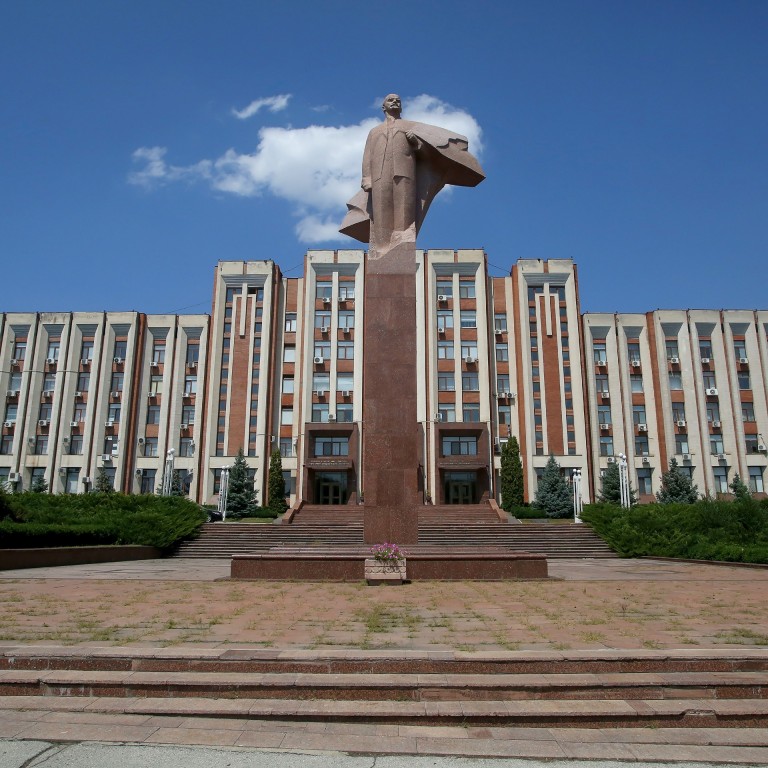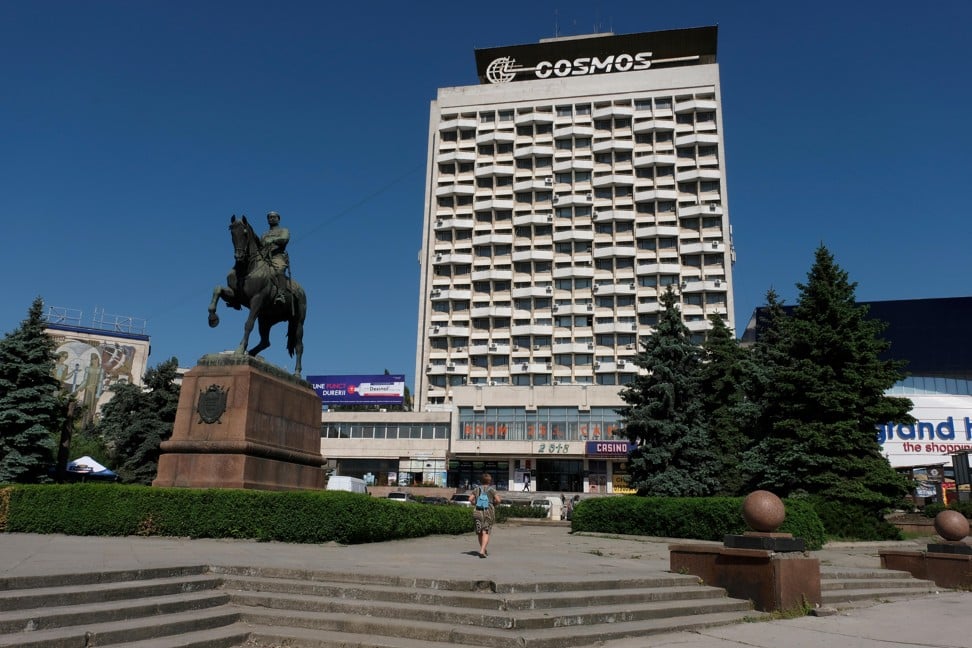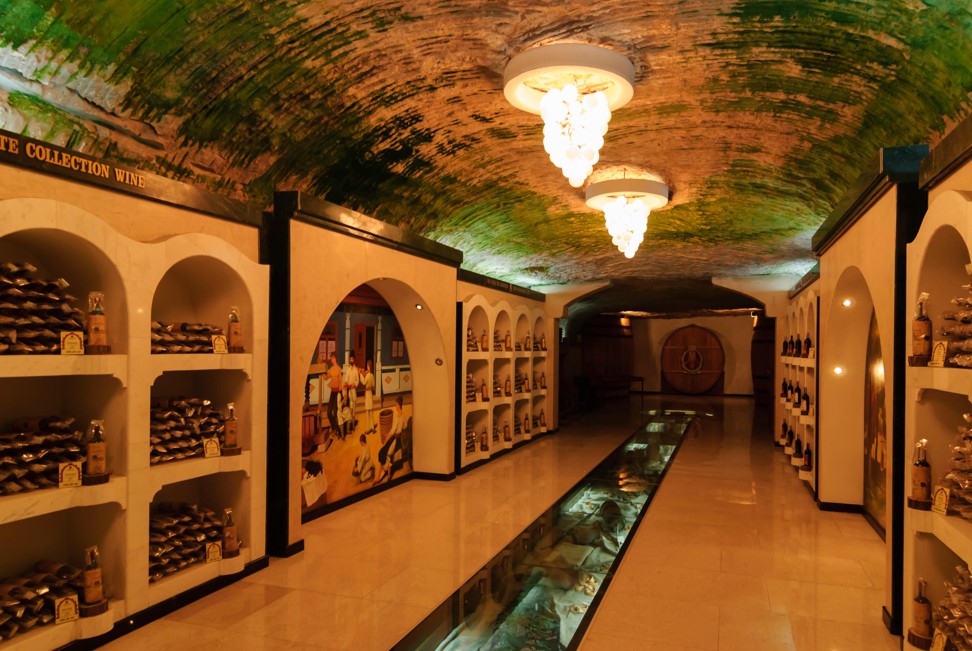
Exploring Moldova, Europe’s poorest and least visited country, where Soviet communism has made a last stand
- Known for its wine, Moldova, austere and landlocked, welcomes fewer visitors than any other country in Europe
- In Stalinist Transnistria, an unofficial state carved out of the country, there is a police officer for every citizen
The train from Romania enters Moldova as I finish breakfast in a restaurant car that looks like my grandmother’s front room: a window framed by heavy purple fluted curtains, silk flowers, a faint smell of cigarettes and orange formica tables spread with buttered white bread, instant coffee, thick slices of garishly pink salami and glasses of orange squash as fluorescent as the table on which they stand.
Drab concrete outskirts and the slowing of the train to a crawl announce our imminent arrival in Chisinau.
I’ve heard nothing but bad things about the ugly Soviet-era capital of Europe’s poorest nation, with the fewest tourists on the continent, but, as I walk in the shade of poplar trees from the station up the gentle slope of Strada Columna to Cathedral Park, I take an instant liking to it.
Clanking yellow trolley buses, connected to wires, hum, spark and rattle past at barely more than walking pace as I stop at a roadside stall to supplement my train buffet with a bowl of mamaliga. This cornmeal porridge is Moldova’s most famous dish, garnished with sour cream that tastes of the farmyard and dill (in Eastern Europe, most food is garnished with dill).
The massive Cosmos Hotel, on Negruzzi Square, is a 332-room skyscraper that was the last word in Soviet luxury when it was built, in 1982. Brown velour chairs perch uncomfortably in one corner of an expansive, underused lobby. The receptionist, dressed head to toe in nylon, is asleep beneath a panel of dusty flags and analogue clocks that tell the wrong time in a variety of cities worldwide.
The bedroom comes complete with cigarette-burned beige carpet, avocado bathroom suite and rotary phone. The smell is evocative of another era, too – a heady combination of cheap perfume and cigarette smoke – and as I lay down on the (rock-hard) bed, I wonder if that is a forgotten KGB camera twinkling in the dim 40-watt bulb.
I wake to find an impromptu street market has sprung up in Negruzzi Square, locals having laid bare their lives on chequered rugs and tablecloths: old clothes, worn swimming costumes, tools and parts of tools, half-used make-up and Soviet badges and medals that boast of a promised land that never arrived. An old man dressed in two coats despite the summer heat tells me that the best time in Moldova was at the end of the second world war, after the Romanians had left but before the Russians came, which by my reckoning meant that the country’s glory days lasted for precisely one month.

Driving away from Chisinau, before I’ve travelled for an hour, I’m stopped twice by policemen eager for a shakedown or an admission of some misdemeanour. When the third officer flags me down, I veer off the road, park in a small village and take sanctuary in a bright blue Orthodox church in which babushkas are cutting a sponge cake and spooning jam into chipped china mugs of hot tea. They take no notice of me. When I decide the policeman has not followed to extract a bribe, or a slice of cake from the women, I slip quietly back through the church’s big oak doors.
Orheiul Vechi is a honeycomb of caves that were dug into a rocky escarpment by monks in the 13th century. It remained inhabited for more than 500 years and was reoccupied and restored by a handful of devotees in 1996. Inside, where it’s cool, there is a small, rough-hewn chapel and an adjacent area where a dozen monks lived for decades at a time, sleeping on the bedrock in tiny nooks, called chilii.
There is just one resident now; a monk called Efim, who keeps watch, prays and sells icons to tourists. He leaves the caves only in the coldest months, he says, when he sleeps in the nearby church, which is so new it still smells of paint.

Tiny stubs of candles leak wax onto the rock in the centre of the complex, but further on, the corridor is flooded with light, the cave opening on to a narrow stone terrace, precipitous above the sinuous river far below. An excellent spot in which to contemplate God.
Most Moldovans look for comfort elsewhere. The country has the second highest per capita alcohol consumption in the world, with the average resident attempting to escape the reality of living in Moldova by guzzling 16.8 litres of booze each year. The nation is also the 22nd largest producer of wine in the world – the 67 million bottles exported annually being the country’s only real economic success story.
I stop at Milestii Mici, which boasts of having the largest wine cellar in the world, with more than two million bottles stored in 200km (125 miles) of underground passages, although only 55km are in use. Travel through the State Enterprise Quality Wines Industrial Complex, to give it its official title, is by car, past the vast barrels and alcoves of bottles that line the routes. The tunnels have a speed limit of 8km/h (5 mph), although, as above ground, few drivers obey it.

Yuri Gagarin, the first Soviet cosmonaut, was once lost for two days in Milestii Mici, my guide, Dorina, tells me. I speculate that the notoriously heavy-drinking spaceman might have got lost on purpose, and in so doing spent far longer in these subterranean cellars than he ever did in space. Dorina doesn’t laugh. She does say, however, that men cannot be trusted around the alcohol, and that explains why 80 per cent of the workers in the cellar complex are women.
The tour continues past individual cellars rented by Chinese and Russian businessman for €1,000 (US$1,140) a year, €500 bottles of red dating from 1974 that have “not been touched” since 1992 (Dorina definitely touches one) and finally back outside, where a red wine fountain sparkles in the afternoon sun.
After a drive through rolling hills of Milestii Mici vines and thick forests in which I imagine retired dancing bears from the Chisinau circus might live, I head for a country that isn’t a country.

Transnistria has its own flag (the last one in the world with a hammer and sickle on it), currency, postal service, police force, licence plates, national anthem, constitution and parliament. It also has a border crossing, where I present my car and papers.
Transnistria means “beyond the river Dniester” and the border is faithful to its name; guards in ill-matching uniforms and clutching machine guns lounge on plastic chairs by a rusted yellow barrier just a few hundred yards over the broad river, which flows slowly between willow trees.
The boot of the car is searched. Having borrowed my pen, one of the officials leans on a rickety table to record my details on an immigration form that tears under the weight of my signature, and then several others put their backs to the concrete counterweight on the steel pole barrier and I am through, into the last Stalinist “nation” on Earth.
They say there is one policeman for every citizen in Transnistria, a strip of land covering about 4,000 sq km, but this comfort does not seem to be persuasive enough to make people stay. Is population is declining rapidly, from 750,000 when independence was declared, in 1990, to 469,000 now, as young people give up their right to an individual policeman and try their luck elsewhere.

The lack of people is evident as I drive down the spine of Transnistria, Ukraine visible from my left window, Moldova from the right. The countryside is flat and featureless – like steppes in miniature; baby steppes, perhaps? The view is punctuated by war memorials – concrete or grass mounds with a second world war tank perched on top, turret saluting the sky – and I wonder whether there is a war memorial for every citizen, too.
An enormous statue of Lenin guards the entrance to the Supreme Soviet building in the capital, Tiraspol, a fine modernist construction in pink granite. Dozens of other busts and posters of Lenin, Stalin and that modern-day hero Vladimir Putin are dotted around town. It is a hot day, the shops are closed and most of the diminished population seem to be out in their underwear, swimming in the Dniester or lazing on its sandy banks.
I find a foreign-exchange shack on the main street. Moldovan lei are unacceptable, of course, but euros are taken, at a highway robbery rate. I stuff the small notes decorated with Lenin I get in return into my pocket and, in no time, I am drinking flat Coca-Cola and eating a flaccid pizza in what appears to be Tiraspol’s only functioning cafe, enjoying the freedom of this tiny, final tiny bastion of communism in the whole of the once great Soviet Union – and wondering how many of my fellow diners are in the police force.
Getting there
Aeroflot, Lufthansa and Turkish Airlines fly between Hong Kong and Chisinau with one stop. Aeroflot, KLM and Qatar Airways fly between Hong Kong and Bucharest with one stop. Trains run from Bucharest to Chisinau.
